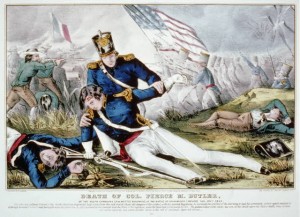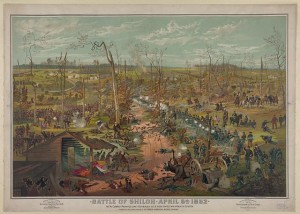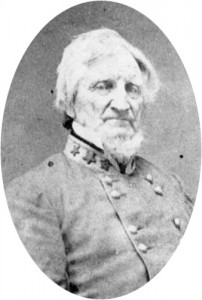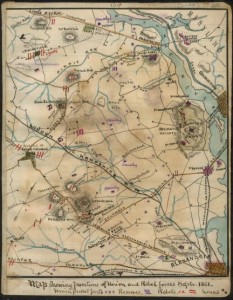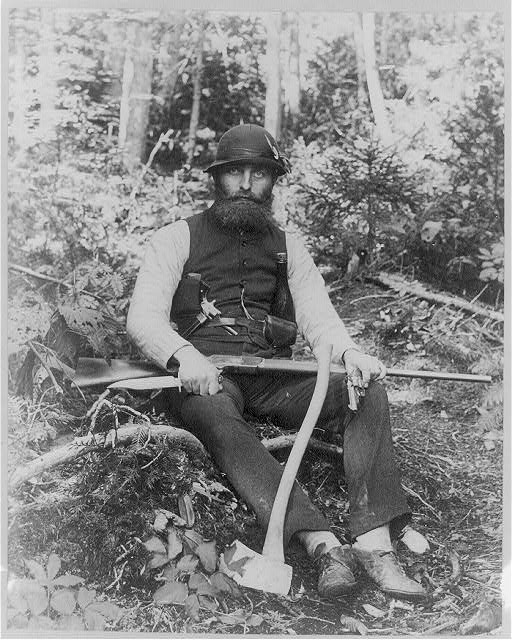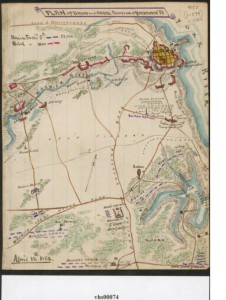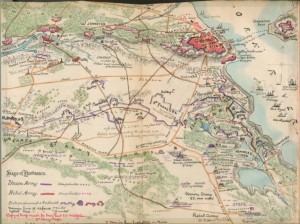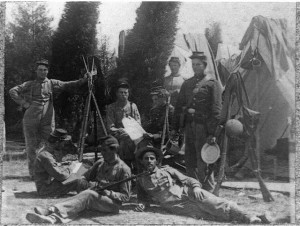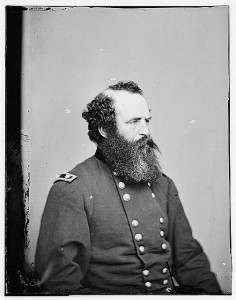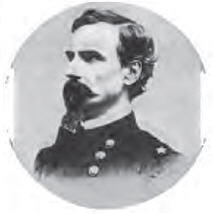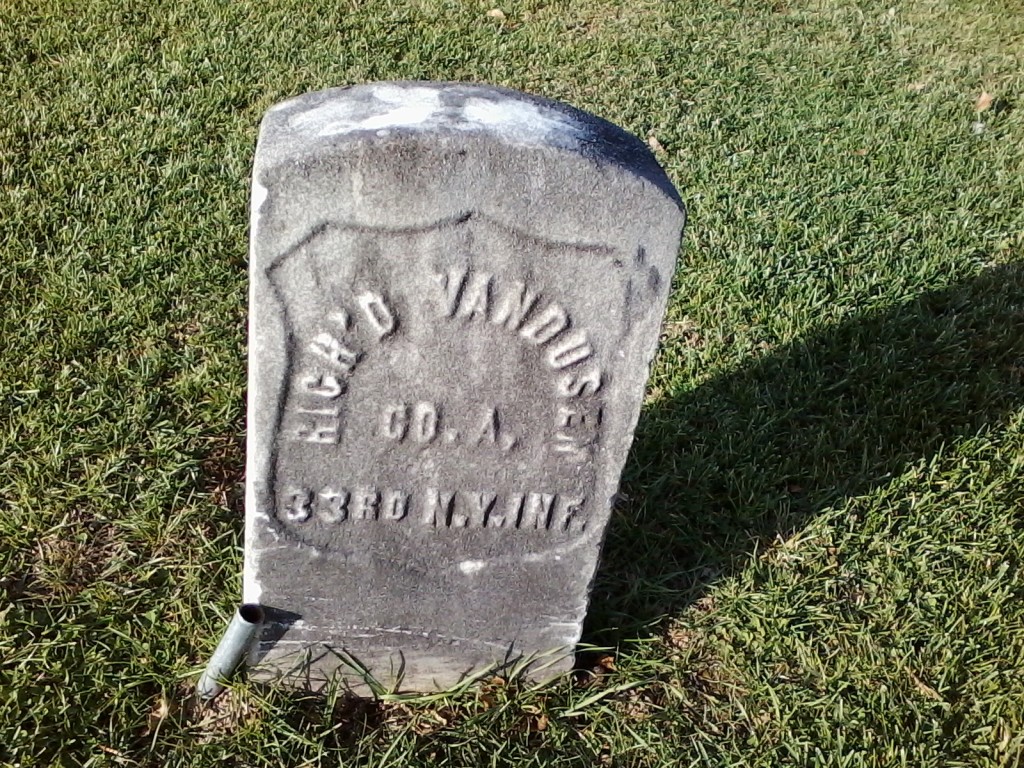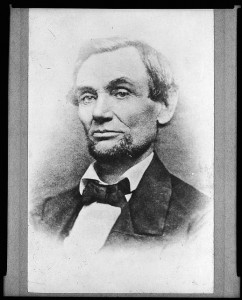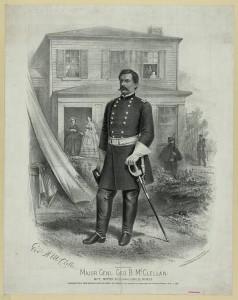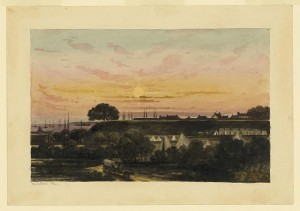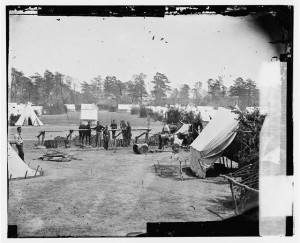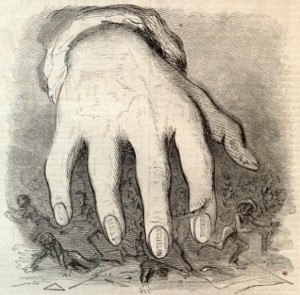
from Fortress Monroe to Yorktown and Warwick River by April 7th
From
The New-York Times April 8, 1862:
IMPORTANT WAR NEWS; Gen. McClellan Before Yorktown with the National Army. The Water Batteries on York River Shelled Out by Our Gunboats. Gen. Magruder in Yorktown with 30,000 Rebel Troops. Shipping Point in Our Possession. Some of the Rebel Outworks Carried. A Probable Siege of Two or Three Days. …
WASHINGTON, Monday, April 7.
The following is a summary of the intelligence received by the War Department up to 10 o’clock to-night:
Yesterday, the enemy’s works were carefully examined by Gen, MCCLELLAN, and were found to be very strong and the approaches difficult. The enemy was in force and the water batteries at Yorktown and Gloucester said to be much increased. There was sharp firing on the right, but no harm was done. Our forces were receiving supplies from Ship Point, repairing roads and getting up large trains.
It seemed plain that mortars and siege-trains must be used before assaulting.
Another dispatch received at 10 1/2 A.M. states that Yorktown will fall, but not without a siege of two or three days. Some of the outer works were taken.
A dispatch from Gen. WOOL states that Gen. MAGRUDER had 30,000 men at Yorktown.
Another dispatch to the Secretary of War states that a new rebel camp was discovered on the beach at the Rip Raps, and was shelled out by Col. HOLLIDAY. Several regiments of the enemy’s infantry were seen from the Rip Raps during the day.
There were no signs of the Merrimac. A rebel tug was seen making a reconnoissance off Sewall’s Point, on the afternoon of Tuesday.
WASHINGTON, Monday, March 7.
On the afternoon of Sunday, Ship Point Battery had been taken, and our gunboats had shelled out the water batteries.
There was considerable delay caused in crossing Deep Creek, at Warwick Court-house, and resistance was made by the rebels, during which several casualties occurred on our side.
All the fortified places of importance before Yorktown had been taken at every point.
The greatest enthusiasm prevailed among our troops.
A fuller account is contained in the following dispatch:
BEFORE YORKTOWN, Saturday Evening.
Hon. Edwin M. Stanton, Secretary of War:
That portion of the Army of the Potomac recently concentrated at Old Point, advanced yesterday morning in the direction of Yorktown, twenty-four miles distant. The right was assigned to Gen. MORRILL’s Brigade, of Gen. PORTER’s Division, two companies of the Third Pennsylvania Cavalry and a portion of BERDAN’s Sharpshooters acting as skirmishers. Nothing of interest took place until their arrival at Big Bethel, twelve miles distant, where they met the outer pickets of the rebels. The troops were delayed here two hours in reconstructing a bridge which had been destroyed.
The rebels retreated before the advance of our skirmishers to Howard’s Creek, where they had some abandoned earthworks. Four shots were fired here by the rebels from two field pieces which were soon silenced by the Fourth Rhode Island Battery, when the rebels beat a hasty retreat, taking their pieces with them. The main body of the army here rested for the night, while Gen. MORRILL’s Brigade advanced three miles to Cuckleville and six miles from Yorktown, and then encamped.
By 7 o’clock this Saturday morning, the column was again in motion, and at 10 o’clock was in front of the enemy’s works at Yorktown.
The first shot fired was by the rebels, the shell passing over the heads of Gen. PORTER and Staff without exploding. The batteries of GRIFFIN, Third and Fourth Rhode Island and Fifth Massachusetts, were now placed in position, replying to every shot sent by the rebels. The cannonading continued, with but slight intermission, until dark. About 400 shots were fired by both parties during the day. The loss on our side, was three killed, as follows:
ED. LEWIS and CHARLES L. LAID, of the Third Massachusetts Battery, and JOHN REYNOLDS, of the Fourth Rhode Island Battery; wounded, TIM DONOHUE, in the hand, FREEMAN KARRIG and CHARLES TUCKER, confusion of chest, all of the Third Massachusetts Battery; Sergt. JAMES WADE, of Company C, in the arm, CYRUS WILCOX, Company C, pieces of shell in the leg, and C.W. PECK, of Company F, in the leg, all of BERDAN’s Sharpshooters.
The position of the rebels is a strong one. From present indications, their fortifications extend some two miles in length, and mount heavy guns. The ground in front of their heavier guns is low and swampy, making it utterly impassable.
[The following important paragraph appeared in the National Intelligencer of yesterday morning. So much information had not been allowed to come over the telegraph wires. — EDS. TIMES.]
“Private intelligence from Gen. MCCLELLAN’s army, at seven o’clock on Saturday night, announces his advance to Yorktown with three Divisions, and his attack on that position. The bombardment of Magruder’s fortifications was progressing well, with very few casualtes on our side. The final result will probably so known here to-day.”


